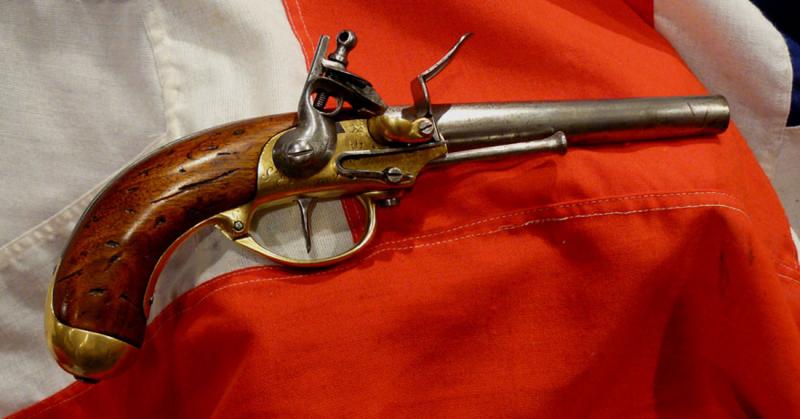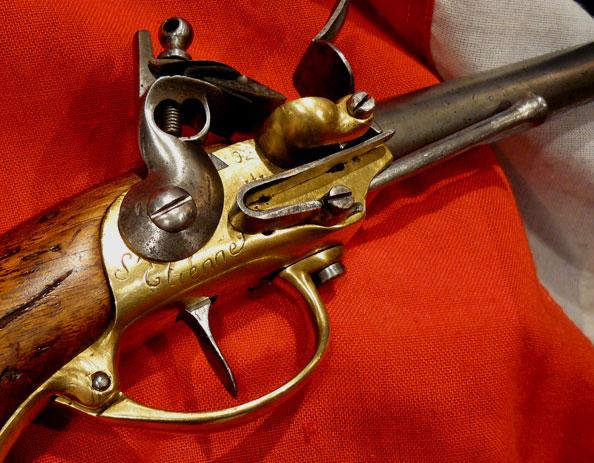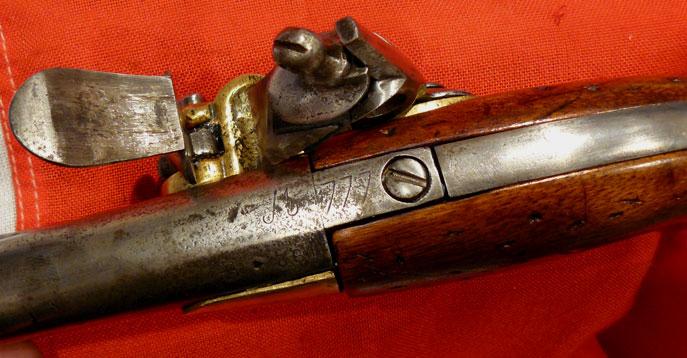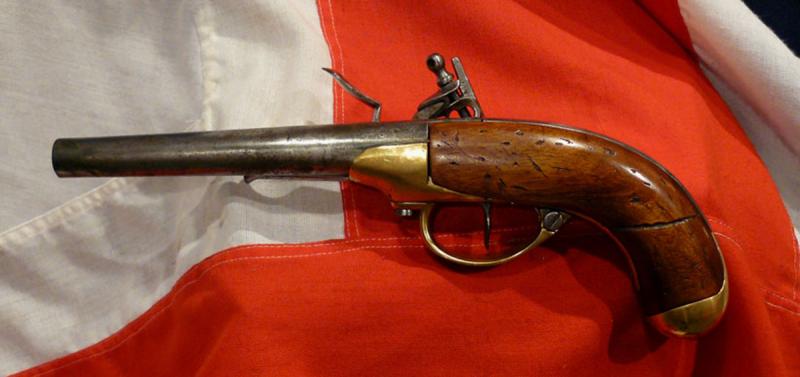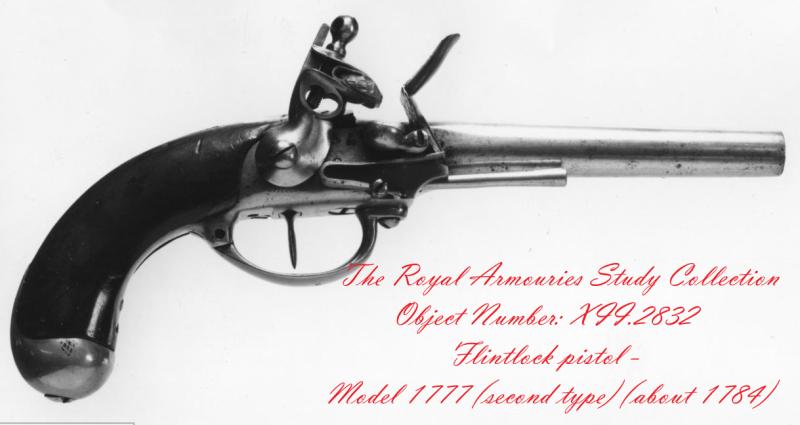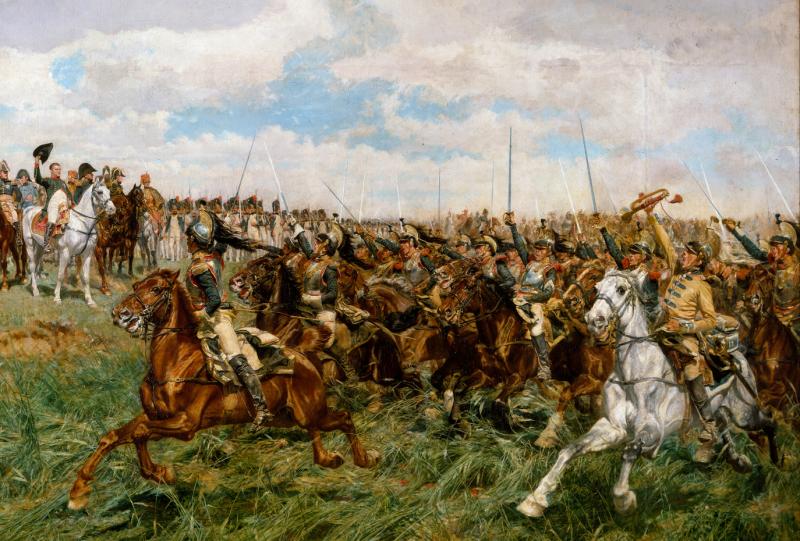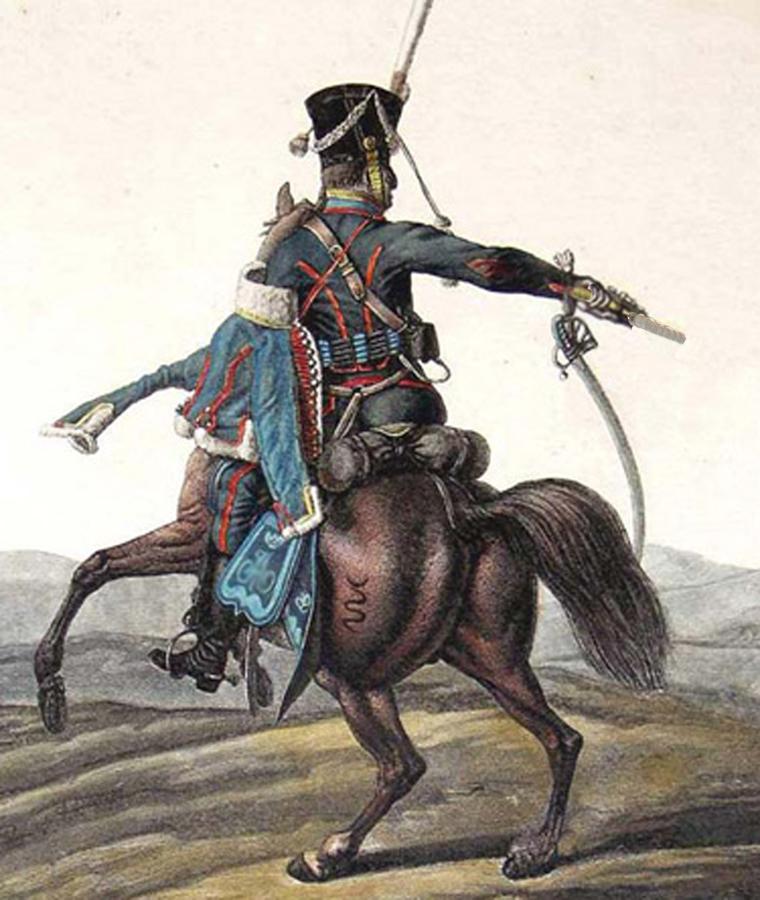A Most Handsome French M1777 Flintlock Cavalry Pistol for Dragoons, Hussars, Lancers and Chasseurs
Predecessor to the First US Martial Pistol, the Model 1799
This a French Model 1777 Flintlock Pistol. The Model 1777 pistol was designed in the late 1770s, and it was manufactured until 1792 in three French arsenals, those being Saint-Etienne, Charleville, and Maubeuge. Between the period of 1778 to 1792
The Model 1777 is historically significant to the American Revolutionary War, as the French recognized the United States of America’s independence and sovereignty in 1778 and declared war on Britain as the fledgling nation’s ally. The French had begun sending arms and supplies in 1775, but secretly. With their new alliance, France provided the U.S. with loans, arms and even troops to fight on U.S. soil. Predecessor to the North & Cheney 1799 pistol, many French 1777 pistols came over from Europe during the American Revolutionary War, both with French troops and as part of the military aid supplied to the Revolution.
After the American Revolution, the first U.S. martial pistol made and officially adopted in America was the incredibly scarce Model 1799, made by Simeon North & Elisha Cheney. The Model 1799 was patterned very closely to the Model 1777, with only a few changes. Only 2,000 1799s were made, making them incredibly rare and very expensive, valued in the tens of thousands.
Finally, the Model 1777 is also historically significant to the French. At the time of this particular pistol’s making, in 1785, King Louis XVI was on the throne. In 1789, the French Revolution began and chaos ensued for the next 10 years, characterised by insurrections, mob violence, execution and assassination. King Louis XVI was executed in 1793. Simultaneously, France was at war with much of Europe. Eventually, Napoleon Bonaparte rose out of the ranks through coup and became emperor.
The overall condition is good+. The iron parts have a weathered grey appearance throughout with traces of pitting. The brass is similarly worn. The walnut stock is solid and with surface dings and dongs and the odd surface score mark .The left side of the barrel still bears a crown proof mark small heart proof stamp and 92. the top of the barrel bears an M 1777 but the one is partially obscured by age wear. The brass frame is marked with a “St. Etienne” a crown proof and another 92. The action is excellent. The bore is dim and smooth, appropriate for age and use.
During its period of manufacture the pistol underwent a few minor changes. The first type of Model 1777 was produced with a belt hook, which was retained by a mounting screw under the brass frame. However, as the pistols were intended for the cavalry, the second type of Model 1777, which was modified in 1784, was manufactured without the belt hooks. The Royal Armouries owns an example of this modified second type of pistol, which was manufactured at Charleville.
A Model 1777 was also produced for officers. Production numbers of the officer variant were considerably lower. 138 pairs were manufactured at Charleville and 85 pairs at Maubeuge. This variant was lighter than the cavalry trooper version, and between 1-3 cm shorter.
The final variant produced was the Revolutionary Model 1777. Modelled with the same characteristics as the second variant, the only change was in the maker's marks on the lock plate. Previously the lock plates displayed the name of the manufacturer in full, whereas the marks on the later version were reduced to a single letter, sometimes accompanied by a crown, which signified where the pistols had been produced.
Use and Effect
Initially the Model 1777 was popular. However, when these pistols began to require general repairs, many gunsmiths found them difficult to fix. The hussars complained that the pistols warmed up too easily after just one to three shots, forcing users to leave them to cool down before reloading. The ramrod was also deemed useless, and soldiers would use their cleaning sticks to load the weapon. In addition, dismantling this pistol for cleaning in the field was fairly time consuming.
Despite these drawbacks, the French supplied thousands of Model 1777 pistols to Britain's enemy during the American War of Independence (1775-1783). The United States went on to adapt this pistol, giving it an 8 in barrel, a rounded breech assembly, and an extra barrel screw on the lower front edge of the frame. With these modifications, this pistol was ultimately renamed the North and Cheney Model 1799 pistol and was the first standardised pistol to be adopted by the U.S. authorities. Today this pistol is extremely rare.
Regardless of the manufacture of the Year IX pistol, and its successor the Year XIII, the Model 1777 pistol also saw some action on the field at Waterloo, including one in the Royal armouries [see photo of the example in the Royal Armouries Collection in the gallery]
Code: 24621

